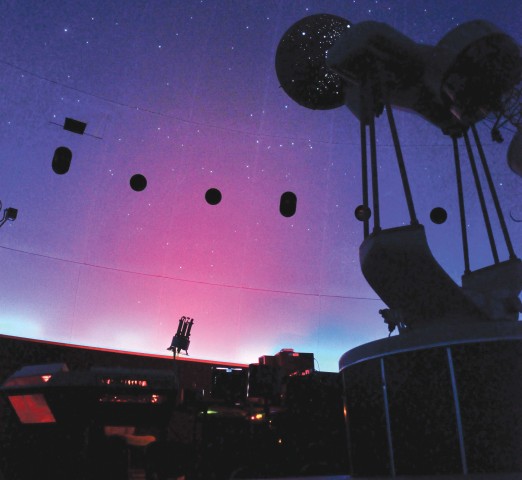
Having been in service for 37 years — one year shy of RBHS’ age — the Columbia Public Schools planetarium, housed in RBHS, will receive equipment updates for the first time in years.
With the help of alumni and anonymous donations, the planetarium will install new machinery today, the first in a multi-stage process to renovate the facility.
Planetarium director Melanie Koncke and 2003 RBHS graduate Caitlin Casey are providing the push behind all the changes with a project called Endless Skies. The project resulted from the recent difficulty the current equipment is causing with multiple breakdowns during the past three years and hardware becoming increasingly obsolete.
The planetarium still requires the person running it to control almost every part of the process manually, including the system’s 20 projectors and five computers. Science teacher Jamie McSparin said she can never count on the machinery to work or to keep working, which disrupts her classes as well as the roughly 5,000 elementary students who come to visit the planetarium each year.
“It’s really hard to plan an activity around [the planetarium] because I never know if it’s actually going to be working that day or not.
“It’s very big struggle because sometimes it, for who knows what reason, doesn’t work,” McSparin said. “We’ve had to cancel a lot of the elementary school field trips because we didn’t know if it was going to work every day, which is just a huge struggle.”
For the past year, Koncke researched replacement options, settling on a digital system that would use projectors instead of a star ball to project stars onto the domed ceiling. Though she said the system isn’t as high in quality as a mechanical star ball, it will be more than satisfactory for RBHS.
“When you have a digital system, you’re taking a bunch of pixels and putting them up onto the sky so you end up with a pixelated star, and a brighter star will just be a bigger blob of pixels. With the star ball, it’s a light bulb that’s projecting the light through a tiny hole so it’s going to be much sharper and much crisper,” Koncke said. “So while this system we’re getting is not the best of the best, I think it is going to work well for our needs.”
However, acquiring the system required jumping over more hurdles. Though the system is one of the cheapest available, the costs exceeded $50,000. But an anonymous donation of the necessary sum got the Endless Skies project moving.
“We still had to go to the school board to get approval for [the anonymous donation]. After getting that done we had to go to the head of the science board and get it approved there,” teacher’s assistant senior David Berry said. “So that’s actually happened, and now we have a solid date for when we’re gonna get stuff installed now, which is” today.
After installation of the new system, the Endless Skies project directors look to raise more money for new seats, projectors and eventually a new star ball, all totaling to a possible $850,000. McSparin hopes the new additions will create increased interest for both high school and elementary school students alike all to enjoy the program.
“I think it will be a really big draw for the class. I think it’ll get elementary students really excited to come to the high school to take astronomy classes, to take science classes,” McSparin said. “We have a very strong science department here at RBHS, and I think it’s going to get people even more excited [about] the possibilities because I think that the technology could be used for other classes as well, not just astronomy.”
By Sami Pathan












































































